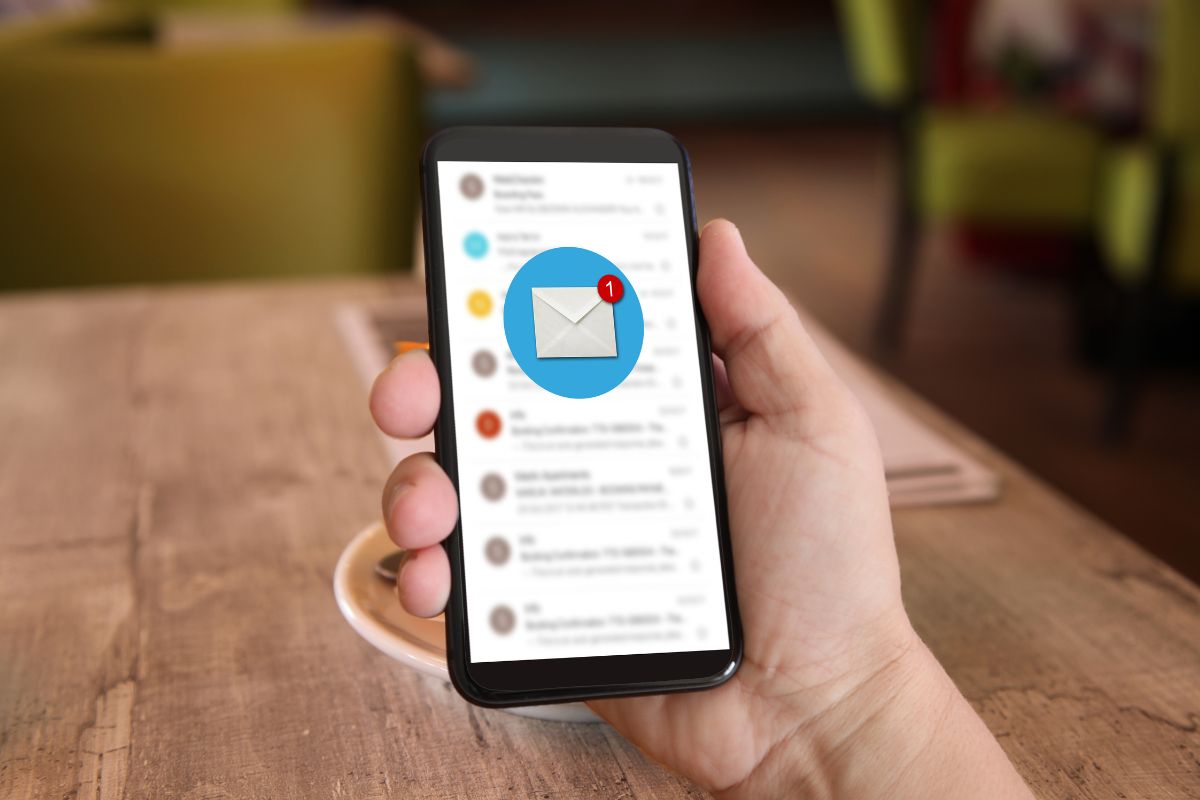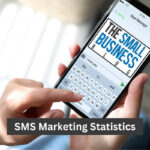Mobile marketing may not be a newbie in the marketing sector, but it’s still a developing arena in the industry that businesses need to implement.
If a business wants to stay relevant and competitive today, mobile marketing is not just an option; it’s a necessity.
We have researched and gathered some useful mobile marketing statistics for our readers in this article.
We will be looking at the most relevant and recent statistics and trends in this sector.
Business owners who aren’t already using mobile marketing need to see these insights to help them get started.
We will also explore this data to find important indicators like conversion rates, costs, and click-through-rates (CTR).
Let’s see what the state of mobile marketing looks like today and what the future holds.
Post Contents
- 1 Key Statistics
- 2 Top Mobile Marketing Statistics in 2024
- 2.1 1. It’s Estimated that The Global Mobile Marketing Sector Will Reach $618.7 Billion (USD) By 2030.
- 2.2 2. The United States Mobile Marketing Market Was Estimated at $51.2 Billion in 2022.
- 2.3 3. China Is Expected to Reach a Mobile Marketing Sector Size of $158 Billion by 2030.
- 2.4 4. Global Mobile Web Traffic Accounts for 58.33% of All Global Website Traffic.
- 2.5 5. Data Shows that There Are 6.92 Billion Smartphone Users in The World.
- 2.6 6. 88% of Consumers Who Searched via Mobile Called or Visited a Business Within 24 Hours.
- 2.7 7. On Average, SMS Text Messages Achieve an Open Rate of 98%.
- 2.8 8. Survey Results Revealed that 70% of Customers Feel SMS Text Messaging Holds Value.
- 2.9 9. 80% of Marketers Claim that Location-Based Marketing Leads Are Highly Effective.
- 2.10 10. Data Shows that Mobile Push Notifications Experience a 7.8% CTR.
- 2.11 11. Smartphone Conversion Rates Are up To 64% Compared to Desktop Conversion Rates.
- 2.12 12. In 2021, 46% of Consumers Said They Would Like to Pay via Text.
- 2.13 13. 64% of Customers Said the Most Valuable Texts from A Business Were Appointment Reminders.
- 2.14 14. SMS Text Marketing Has an $8.11 ROI per Text.
- 2.15 15. 110 Billion Hours Were Spent Using Shopping Apps in 2022.
- 3 FAQs
- 4 Conclusion
- 5 Sources
Key Statistics
- It’s estimated that the global mobile marketing sector will reach $618.7 billion (USD) by 2030.
- The United States mobile marketing market was estimated at $51.2 billion in 2022.
- China is expected to reach a mobile marketing sector size of $158 billion by 2030.
- Global mobile web traffic accounts for 58.33% of all global website traffic.
- Data shows that there are 6.92 billion smartphone users in the world.
- 88% of consumers who searched via mobile called or visited a business within 24 hours.
- On average, SMS text messages achieve an open rate of 98%.
- Survey results revealed that 70% of customers feel SMS text messaging holds value.
- 80% of marketers claim that location-based marketing leads are highly effective.
- Data shows that mobile push notifications experience a 7.8% CTR.
Top Mobile Marketing Statistics in 2024

1. It’s Estimated that The Global Mobile Marketing Sector Will Reach $618.7 Billion (USD) By 2030.
Since the pandemic, the whole business landscape for marketing across any sector has changed.
That said, in 2022 the estimated global market for mobile marketing accounted for $187.8 billion (USD). Furthermore, it’s projected to reach $618.7 billion (USD) by 2030.
These figures cannot be ignored.
(GlobalNewswire: ResearchAndMarkets)
2. The United States Mobile Marketing Market Was Estimated at $51.2 Billion in 2022.
In 2022, experts estimated that the mobile marketing sector was worth $51.2 billion.
This accounts for the largest share of the global mobile marketing market.
It’s expected to reach $102 billion by 2030. This is in light of a growth rate of 22% between 2022 and 2030.
(GlobalNewswire: ResearchAndMarkets, GlobalNewswire)
3. China Is Expected to Reach a Mobile Marketing Sector Size of $158 Billion by 2030.
China’s growth rate is slightly higher than in the United States.
The U.S. growth rate in mobile marketing is expected to be 22% over 2022 to 2030 while in China the growth rate is expected to be 22.3% in the same period.
(GlobalNewswire: ResearchAndMarkets)
4. Global Mobile Web Traffic Accounts for 58.33% of All Global Website Traffic.
The total share of internet traffic all over the globe comes to 58.33% as of the first quarter of 2023.
Moreover, the total share of all mobile internet traffic accounts for 67.81%, according to data from May 2023.
How can over half of all internet traffic be taken lightly?
(Statista, The Small Business Blog)
5. Data Shows that There Are 6.92 Billion Smartphone Users in The World.

Recent statistics have revealed that 6.92 billion people across the globe use smartphones.
Moreover, 85.88% of them own smartphones.
For comparison, there were 3.668 billion smartphone users accounted for in 2016, which accounted for 49.40% of the world’s population.
Moreover, 7.33 billion people in the world use mobile phones and 90.97% own a mobile phone.
(BankMyCell)
6. 88% of Consumers Who Searched via Mobile Called or Visited a Business Within 24 Hours.
Brands, marketers, and businesses need to know that a whopping 88% (at least) of consumers who search for a local business on their mobile device will call or visit that business within 24 hours after their search.
Therefore, for most mobile users it’s important to have fast and easy access to local business search data.
(Nectafy, SEOExpert)
7. On Average, SMS Text Messages Achieve an Open Rate of 98%.
Recent data from 2019 reveals that SMS text messages experience an average open rate of 98%.
That’s significant when you’re considering adding mobile marketing to your current marketing strategy.
This is one of the reasons businesses are on board with optimizing their sites and marketing efforts for mobile.
(Forbes)
8. Survey Results Revealed that 70% of Customers Feel SMS Text Messaging Holds Value.
In one survey, 70% of customer respondents said that they want SMS text messages from businesses.
It seems that customers prefer text messages over phone calls most of the time when they are contacting or being contacted by businesses.
Likewise, 77% of customers are prone to subscribing to a brand’s text messages to get discounts or coupons.
(Quiq)
9. 80% of Marketers Claim that Location-Based Marketing Leads Are Highly Effective.
A massive 80% of Marketers are saying that location-based leads increase the metrics in three key areas.
This includes an 85% boost in customer base, an 83% increase in responses, and another 83% in customer engagement.
Furthermore, most people respond to SMS messages within 90 seconds and SMS text marketing has a 45% response rate.
(DSM)
10. Data Shows that Mobile Push Notifications Experience a 7.8% CTR.

Push notifications play a role in mobile marketing.
In fact, push notifications get an average overall click-through-rate (CTR) of 7.8%.
One study in 2019 showed that opt-in rates on average for Android mobile accounted for 91.1% and for iOS it was 43.9%.
The average CTR for Android push notifications accounted for 4.1% and for iOS 1.7%.
(Moengage)
11. Smartphone Conversion Rates Are up To 64% Compared to Desktop Conversion Rates.
The time spent on mobile devices is on the rise.
In fact, 2016 data reveals that Americans spent an average pf 10 hours each day on their mobile devices.
This is just one of the metrics that show us the importance of mobile marketing.
It’s worth mentioning that 60% of all eCommerce website visits started from a mobile device according to 2017 data.
(Prism Global)
12. In 2021, 46% of Consumers Said They Would Like to Pay via Text.
A survey from 2021 found that almost 46% of consumers said they would like a text payment option if the process were done securely.
In contrast, only 29% of businesses claim they will even consider taking payments via text.
That said, Authvia and ZipWhip are companies that implemented TXT2PAY in 2020 which lets customers make secure payments by responding to a payment request text using the last four digits of their phone number.
(Businesswire)
13. 64% of Customers Said the Most Valuable Texts from A Business Were Appointment Reminders.
Businesses all over the globe have massive opportunities to use SMS text and other mobile texting to boost their marketing efforts.
Since 64% of consumers feel appointment reminders are a valuable text service, they are open to text.
Shipment and delivery updates accounted for 48% of consumers that find that valuable and in terms of getting discounts and coupons, 29% found that kind of text valuable.
(businesswire)
14. SMS Text Marketing Has an $8.11 ROI per Text.
While SMS text marketing isn’t the only way to utilize mobile marketing it does play a significant role in marketing.
When a business uses SMS text marketing, the average return on investment (ROI) comes to as much as $8.11 per message.
Some brands say they achieve an ROI of 115 times their costs of sending messages.
For reference, the average cost per message is $0.01 and $0.05.
(Mayple)
15. 110 Billion Hours Were Spent Using Shopping Apps in 2022.

If you need more proof of the significance of mobile marketing, consumers spent nearly 110 billion hours on shopping apps in 2022.
This percentage is 9% more than it was in 2021.
This shows us that this arena is growing.
(Udonis)
FAQs
What is Mobile Marketing?
Mobile marketing is a type of digital marketing that is optimized to be mobile-friendly across tablets, smartphones, and other mobile devices.
It’s used to reach and engage with a variety pf audience.
Businesses that use mobile marketing use it to promote their products and services, drive traffic to their sites and apps, and to effectively build brand awareness.
Why is Mobile Marketing Important?
With more people using smartphones and other mobile devices, mobile-friendly marketing efforts can get exposure to that audience.
Statista revealed that 54.4% of all global internet traffic comes from mobile devices.
Therefore, if businesses want to reach out and engage with their targeted audience, they need to optimize their marketing for mobile.
What are Some Different Types of Mobile Marketing?
Today, there are several distinct types of mobile marketing which can include:
• Location-Based Marketing: This is when businesses send out marketing messages to mobile users in specific geographical locations.
• SMS Marketing: SMS is how messages are sent in text from to mobile phones.
• Mobile Search Marketing: This relates to the optimization of apps and websites for mobile search engines.
• Mobile App Marketing: App marketing via mobile is how businesses advertise and promote mobile apps.
• Mobile Advertising: This is the method that allows businesses to display ads across mobile devices.
• Social Media Marketing: Social media marketing reaches out to social users via their mobile apps and on the platforms’ websites.
How Can You Create a Successful Mobile Marketing Campaign?
You must consider several factors for your mobile marketing strategy before you can create a successful mobile marketing campaign.
Here are a few tips on how you can do that:
• Create Mobile-Friendly Content: Start by creating and optimizing content that is mobile-friendly. This means it can be viewed, read, and easily navigated on a small, mobile screen.
• Target Your Specific Audience: If you don’t already know your audience demographics, get to know them. Once you do, create mobile-optimized content directed at them in terms of their interests, behaviors, and personality.
• Use the Proper Channels: You will find that there are several diverse mobile marketing channels from which to choose, so you need to select the right one that suits your business and your targeted audience.
• Measure Results: Always monitor and track your mobile marketing campaigns so you can “fix” what isn’t working and stick to what is working.
What are Some Challenges of Mobile Marketing?
There are obviously benefits of mobile marketing, but what about these challenges?
• It’s difficult to reach all mobile users across operating systems and devices.
• Today, mobile users are constantly getting multiple notifications and ads on their devices, so it can be hard to get their attention.
• Sadly, mobile devices (especially phones) are often stolen or lost. That makes for riskier security issues for businesses and user data collection.
What are Some Benefits of Mobile Marketing?
We have gathered just a few benefits of mobile marketing for you to consider.
Here is what we found.
• Reach: While it’s challenging to reach all devices and operating systems on mobile devices, your reach is still expanded to those who extensively use their mobile devices.
• Engagement: Mobile devices tend to be mostly personal devices, so people are more engaged with that content. It’s an effective way to connect with your specific audience.
• Personalization: Personalized mobile marketing improves your authority and reputation, which often results in better relevance of messages and effective engagement.
• Measurability: Monitoring and tracking mobile marketing results is easy and vital.
• Cost-Effective: Mobile marketing can be quite cost-efficient when trying to reach a larger audience. Choose channels for mobile marketing carefully and according to your budget.
Conclusion
By reading these statistics, it’s obvious that mobile marketing is trending and growing.
As more businesses and brands jump on the mobile marketing brand wagon, it’s wise to at least consider it.
Businesses and brands may find themselves falling well behind their competition at the local, regional, and global levels if they neglect the existing success of mobile marketing.
We hope these mobile marketing statistics have enlightened you to the benefits and challenges of this marketing sector.
Keep these statistics and tips nearby to help you with mobile marketing strategy creation and campaigns.






























